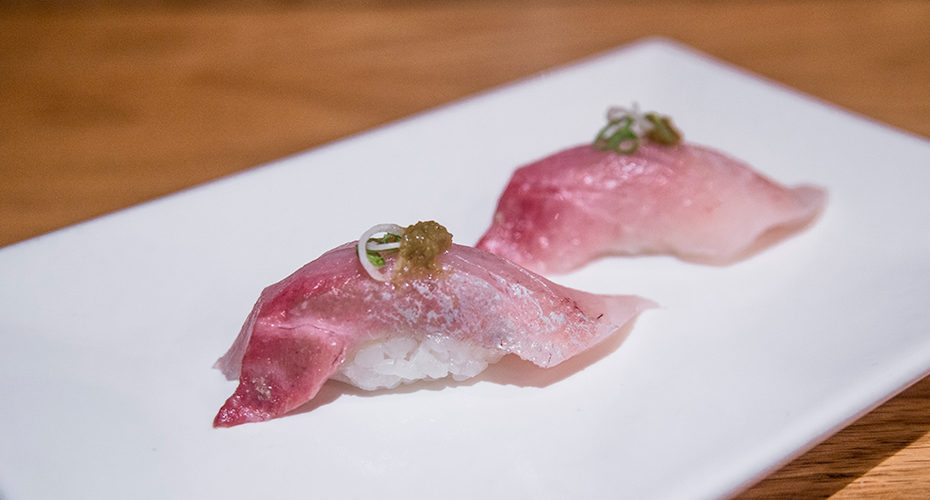If you eat sushi often enough, it’s likely you’ve come across kanpachi. It’s a close cousin of hamachi, and the two are sometimes used interchangeably. But they’re not the same thing.
This post is all about kanpachi, aka greater amberjack. Learn where it’s from, what it tastes like, and how it’s commonly served. I throw in some useful beverage pairings recommendations too.
I include a number of affiliate ads on this post that you may find useful. They support this free blog, as I receive commissions on qualifying purchases.
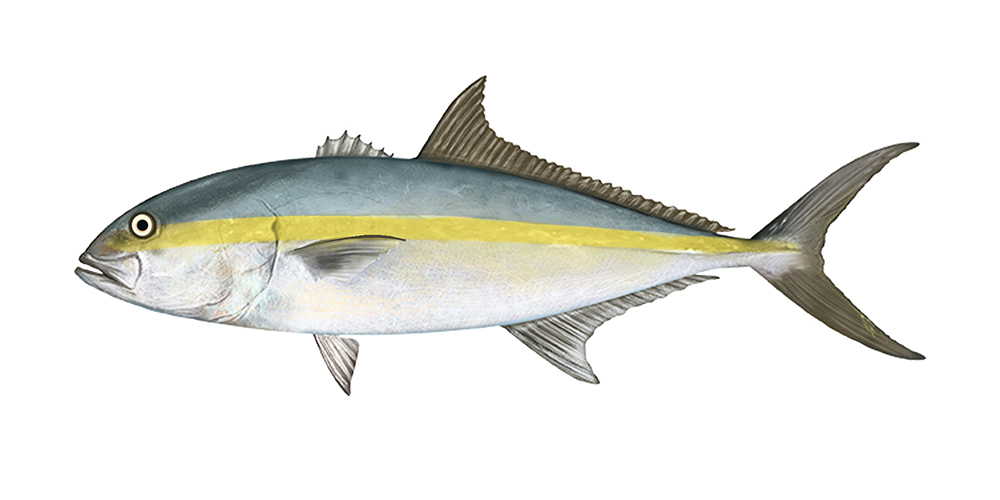
What is Kanpachi?
Kanpachi is a fairly popular fish served at sushi restaurants and izakaya. It’s a close cousin of hamachi, and confusingly, both are sometimes called yellowtail. The texture and flavor of each are slightly different, however.
Compared to buri (mature yellowtail) of the same size, kanpachi is leaner and less fatty.
Kanpachi (間八, カンパチ) is also commonly spelled kampachi.
The name “kanpachi” comes from the markings of young amberjack which resemble the character “八” (pronounced hachi). As the fish matures, this shape disappears.
Check out my hamachi guide if you’d like to know more about these two related fish.
advertisement
Seasons and Kanpachi
Wild-caught kanpachi sushi and sashimi is considered best in summer – especially June and July. But because this fish is often farm-raised, it can be found all year.
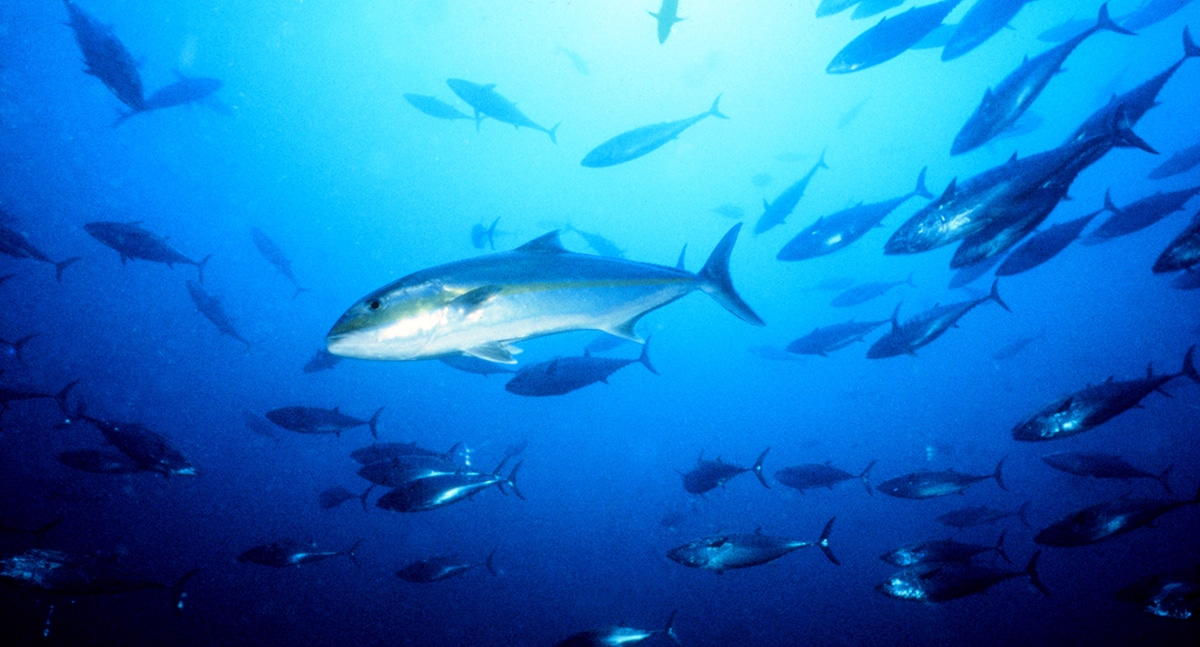
Greater Amberjack Species Info and Distribution
Kanpachi, Seriola dumerili, is the largest member of the jack (Carangidae) family. It’s a muscular apex predator. The greater amberjack ranges from temperate to tropical waters with a circumglobal distribution.
The greater amberjack can reach up to 75 inches (1.9 meters) in length and 178 pounds (80.6 kg) in weight. However, most specimens are much smaller than this. For sushi, fish ranging from 6-12 pounds are considered best.
In Japan, greater amberjack migrate between cool northern waters around Tohoku and the sub-tropical seas of Kyushu and southern Honshu. Kanpachi from Oita, Miyazaki, Nagasaki, Kagoshima, Wakayama, and Chiba are particularly prized.
The global distribution of kanpachi includes both hemispheres. Wild populations exist in the Atlantic from Nova Scotia to Brazil, the Indian Ocean, the Caribbean, the Gulf of Mexico, the Mediterranean Sea, eastern Africa, Tasmania, and beyond.
Farmed vs Wild Kanpachi
Greater amberjack can be wild-caught or farm-raised. Usually, it’s the latter. Wild amberjack from warmer waters has been known to cause ciguatera fish poisoning.
As with hamachi, farm-raised kanpachi is fattier and has a softer texture than wild-caught fish.
Kona Kanpachi
A very popular and sustainable amberjack farmed fishery is present off the coast of Hawaii. Called Kona kanpachi, these fish are kept offshore over very deep water. This way they don’t have as adverse an effect on the local ecosystem.
Hawaiian kanpachi has been rated a “Good Alternative” by the Monterey Bay Aquarium’s Seafood Watch program. It takes 18 months for these fish to reach full maturity.
What Does Kanpachi Taste Like?
Kanpachi is a meaty fish with a firm texture. It has a mild, sweet flavor with no fishiness. As mentioned above, farm-raised amberjack tends to be fattier. This makes it softer in texture.
The belly is the fattiest part of the fish. It’s slightly softer but still firmer than hamachi.
Similar Fish to Amberjack
Greater amberjack has several close relatives that are also popular in Japanese cuisine.
| Characteristic | Hamachi / Buri – Yellowtail | Kanpachi – Greater Amberjack | Hiramasa – Yellowtail Amberjack | Shima Aji –Striped Jack |
| Scientific Name | Seriola quinqueradiata | Seriola dumerili | Seriola lalandi | Pseudocaranx dentex |
| Flavor | Buttery, mild, rich umami | Clean, mild, slightly sweet, mod. umami | Clean, mild, slightly sweet, mod. umami | Clean, mild, faint sweetness, sl. umami |
| Texture | Tender, buttery | Firm, meaty | Firm, meaty | Semi-firm, sl. oily |
| Price | $-$$ | $$$ | $$$$ | $$$$ |
| Rarity (in the US) | Widely available | Less common | Rare | Less common |
| Sustainability | Not sustainable | Generally sustainable | Generally sustainable | unknown |
| Seasonality | Winter is prime;Year-round | Summer is prime; Year-round | Prime early summer- summer; Year-round | Summer; Year-round |
| Farmed/Wild | Almost entirely farmed | Mostly farmed; wild amberjack from warm waters can cause ciguatera fish poisoning | Mostly farmed | Mostly farmed |
This amberjack post is part of an informative sushi and sashimi guide. Check it out if you want to take your sushi game pro.
Types of Kanpachi Fish Dishes
Kanpachi isn’t as common as hamachi, but it appears in many of the same dishes. Of course, it’s most famous for sushi and sashimi.
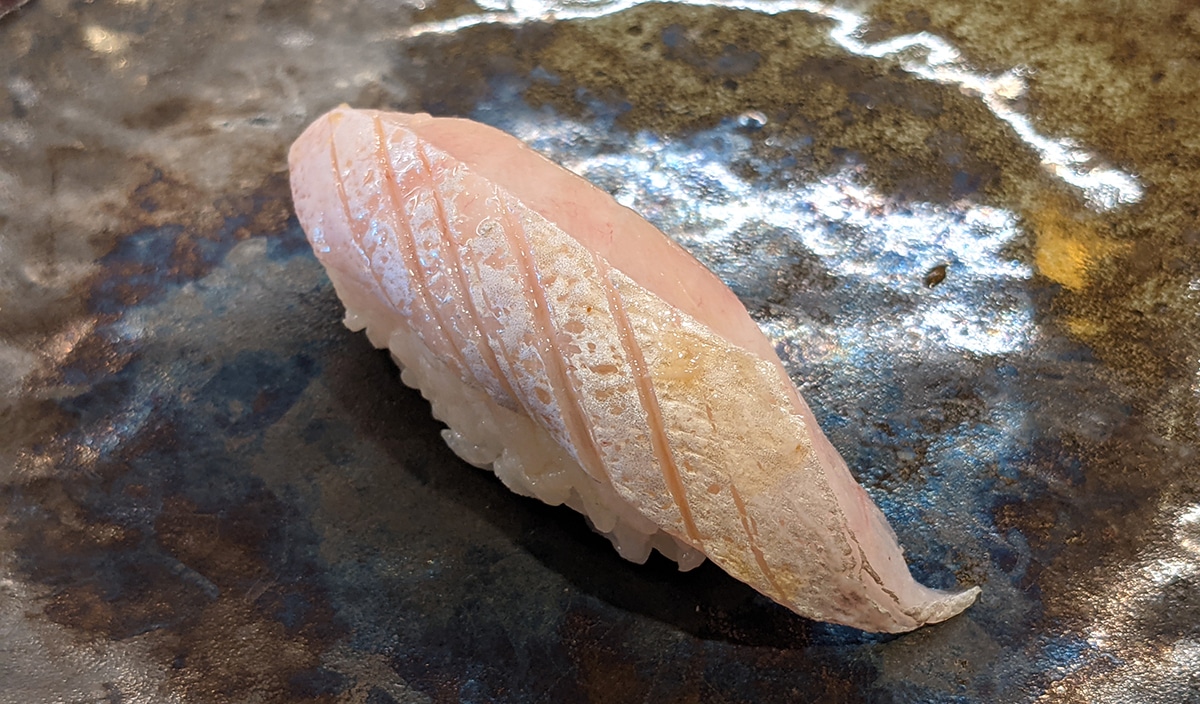
Kanpachi Sushi
Kanpachi sushi is a delicacy that everyone should try at least once. It will sometimes be used on chirashi or in a sushi roll. However, nigiri is by far the most common presentation.
Raw kanpachi is often aged for a few days to improve its quality compared to ocean-fresh fish. Aging increases sweetness and umami, while also creating a more tender texture.
Kanpachi Nigiri
Nigiri is a simple form of sushi. It consists of a finger of sushi rice with an ingredient on top. Amberjack is usually sliced thin when used for nigiri. This is because of its dense texture.
Wild-caught kanpachi nigiri is incredible, especially in the wintertime. In cold water, it has more fat. Its flavor is somewhat buttery during this time.

Kampachi (Yellowtail)
from: Riviera Seafood Club
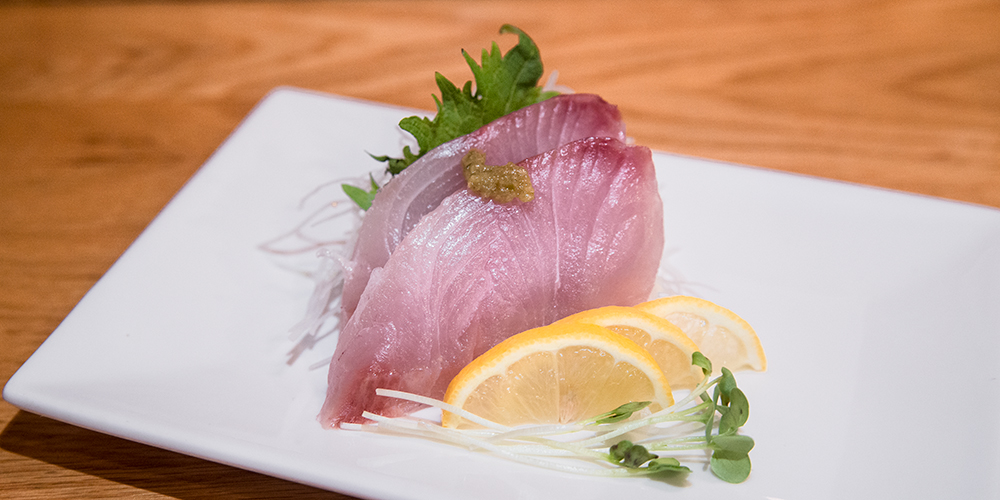
Kanpachi Sashimi
Thinly sliced amberjack sashimi is a real treat. This is the most common way you’ll find kanpachi served along with nigiri.
Amberjack sashimi is often sliced moderately thin. It’s muscular and firm but still relatively tender. So that sweet spot between thick and super thin is best for kanpachi sashimi.
Kanpachi Kama
Kama is the part of the fish located behind the pectoral fin. It’s also called a collar. Just like yellowtail, amberjack has a tasty collar. Unlike hamachi kama, amberjack collar is a lot harder to find for most people.
Kanpachi kami epically delicious when grilled. But also look out for it simmered as nitsuke (simmered).

Kampachi (Yellowtail) Collars
from: Riviera Seafood Club
Recommended Sushi Plates
As an Amazon Associate I earn commissions from qualifying purchases.
Suggested Beverage Pairings
Raw kanpachi is firm, mild, and clean in flavor. It’s a profile that works very well with fruity and delicate sake.
Grades like ginjo, junmai daiginjo, and daiginjo are often perfect compliments.
There’s an old sake pairing saying that suggests you don’t pair rice with rice. Which is to say, you don’t serve junmai-shu sake with nigiri. I find this to be total nonsense. Nigiri amberjack will be just as delicious with a junmai daiginjo as with a daiginjo sake.
For grilled kanpachi collar, I recommend earthier sake with more acidity. Grades like junmai and honjozo will often work really well. I especially like the kimoto and yamahai substyles of these grades for cooked amberjack.
Check out my Sake Grades and Styles post if you want to learn more about the different types of sake. And afterward, take a look at my Top Sake page if you want to find some classic examples of the different types of sake.
Wine and Beer Pairings
Dry, mineral-driven wines are also a good pairing with kanpachi. Pinot grigio, Muscadet, Roero arneis, and Savoie are all wine regions/grapes that simply get it done.
Sparkling wine like Champagne, Prosecco, and Cava also are a fantastic pairing match with kanpachi nigiri or sashimi.
Lastly, clean and refreshing beers will pair nicely, as well. Japanese brands like a little extra umami are even better. Think Kirin Ichiban, Orion, and Echigo Koshihikari. These beers work just as well with salt-grilled kanpachi kama.
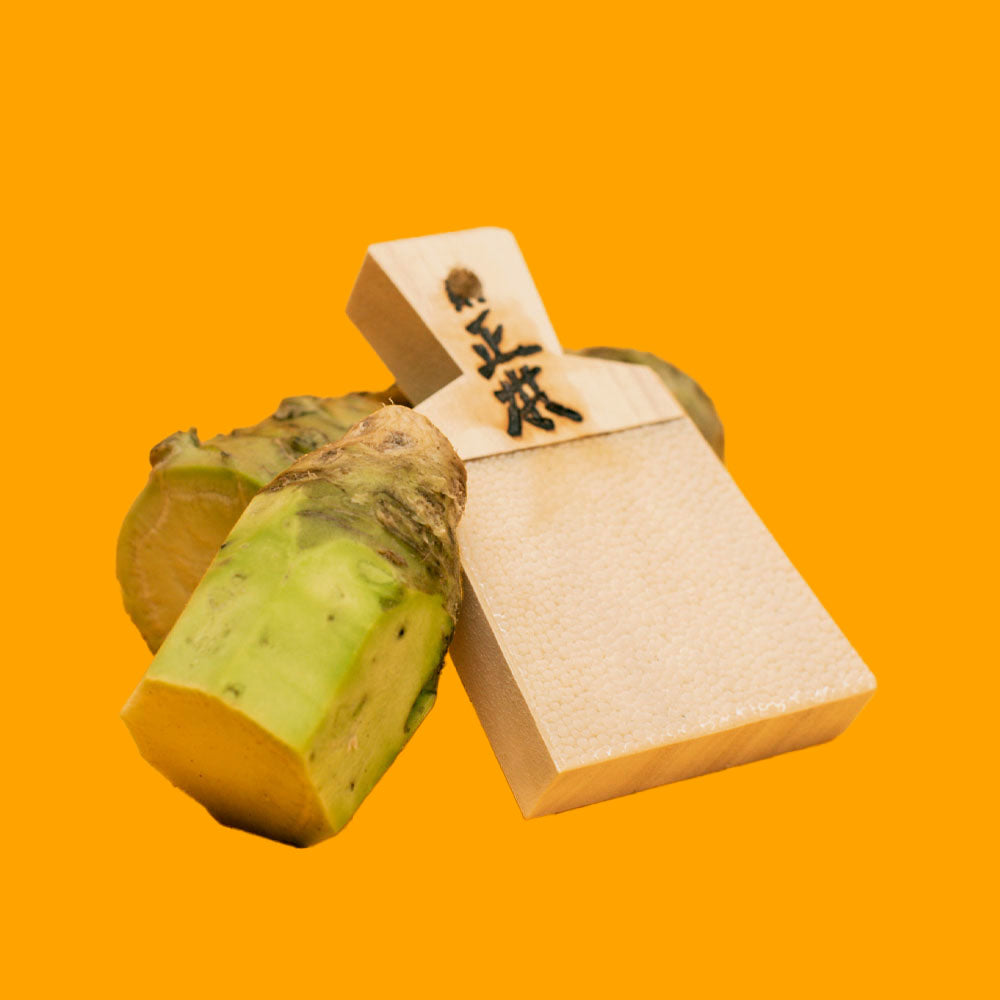
Northern California Grown Fresh Wasabi
from: Riviera Seafood Club

31 Days of Sushi
If you find this post useful or enjoyable, I suggest you check out some of the other content in my 31 Days of Sushi campaign.
Every day in August I’ll share a new piece of content. Topics are centered around nigiri and maki sushi. I include sashimi info, as well.
It’s like an omakase of sushi information!
advertisement
Recommended Japanese Kitchen Knives
As an Amazon Associate I earn commissions from qualifying purchases.
What Do You Think About Kanpachi?
Do you like it more than hamachi?
Also, what’s your favorite amberjack dish?
Please share your thoughts by commenting below!
